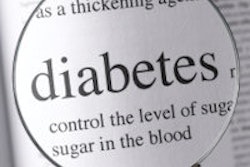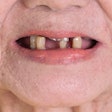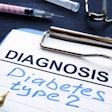
After more than three decades spent exploring the connections between periodontal disease and other diseases and health conditions, Robert Genco, DDS, PhD, believes he's got the big picture.
Shedding light on the link between periodontitis, diabetes, CVD, and more
After more than three decades spent exploring the connections between periodontal disease and other diseases and health conditions, Robert Genco, DDS, PhD, believes he's got the big picture.
He sees periodontal disease as synergistically bound together with a set of other afflictions, including diabetes, obesity, and cardiovascular disease (CVD) -- disorders that burden and kill millions of Americans.
"There's a term for that," he said. "It's a syndemic."
The tie that binds them? "Systemic inflammation is a reasonable hypothesis," said Dr. Genco, a distinguished professor of oral biology and microbiology at the University at Buffalo.
Other researchers are more cautious in their assessments. Yet even with much still unknown, systemic inflammation may become the tie that also finally binds oral health professionals to physicians, nurses, and pharmacists.
There's a term for that too. It's "interprofessional patient care," said Anthony Iacopino, DMD, PhD, the dean of the University of Manitoba Faculty of Dentistry and the director of the International Centre for Oral-Systemic Health. Across the health professions, caregivers are recognizing the importance of addressing inflammation. And that includes periodontal disease.
"That's where the oral health community comes in," Dr. Iacopino said. "For dentists and hygienists, that's where the rubber meets the road."
Underlying mechanisms
Meanwhile, major insurers also are beginning to look at the mouth as part of the body, said Robert Compton, DDS, vice president of quality management for DentaQuest, which administers dental benefits for more than 15 million people across the U.S. They see periodontal care paying off in lower risk scores and medical costs for patients coping with diseases such as diabetes.
"I think the industry as a whole is starting to recognize these connections," Dr. Compton said.
But science moves slowly. Researchers have been probing the associations for years. And on their way to discovering the truth, they have needed to negotiate a host of complex causations, shared risk factors, and study biases that may distort findings. One ongoing debate, over periodontal treatments and pregnancy outcomes, is a case in point.
Research funded by the National Institutes of Health's (NIH) National Institute of Dental and Craniofacial Research (NIDCR) is aimed at continuing to advance the understanding of mechanisms that may link periodontal disease to other diseases, as well as determining the risk reduction that may be afforded by specific periodontal treatments.
"The NIDCR is committed to supporting well-designed clinical research projects. This includes studies that demonstrate the importance of oral health to overall health and individuals' quality of life," said Jane Atkinson, DDS, the NIDCR's director for clinical research.
There is much left to know. Work goes forward, she said, particularly in learning about relationships between periodontal disease and three major disorders.
"The associations of periodontal disease and diabetes, periodontal disease and cardiovascular disease, and periodontal disease and pregnancy outcomes have been studied intensely in the last 15 to 20 years," Dr. Atkinson said. "Periodontal disease is a recognized complication of diabetes."
Back to the beginnings
Some of Dr. Genco's landmark work helped establish that key recognition. His research got a humble start in 1981, in a trailer clinic on the Gila River Indian Community in central Arizona.
He was there at the request of what was then known as the National Institute of Dental Research, now the NIDCR. Diabetes was rampant in the community and so was periodontal disease. Following 3,600 Pima Indians over time, Dr. Genco pondered the question "Are people more likely to have periodontal disease if they also have diabetes?"
"The answer is overwhelmingly yes," he and colleagues concluded.
The rate of periodontal disease in the Pima people with type 2 diabetes was 2.6 times that observed in those without the condition. Although periodontal disease was common in Pima Indians without diabetes, in whom most of the incident cases occurred, diabetes clearly conferred a substantially increased risk, Dr. Genco and his team found (Diabetes Care, August 1990, Vol. 13:8, pp. 836-840).
The finding that periodontal disease is a complication of diabetes has been borne out since by studies in other populations (Journal of the American Dental Association [JADA], October 2008, Vol. 139:suppl 5, pp. 19S-24S).
The connections are still not completely understood, yet to many researchers the double-edged sword of the body's inflammatory response seems central. In response to a periodontal infection, the immune system launches its defense, in the form of macrophages and proinflammatory cytokines such as tumor necrosis factor alpha (TNF-α). These inflammation-heightening proteins are essential to fighting disease. But when inflammation persists and becomes chronic, it can also cause harm, destroying tissue and bone and also setting off what Dr. Genco characterizes as a cascade of other effects.
He and others have found the degree of hyperglycemia, or high blood sugar, relates to the severity of periodontal disease. And they point to growing evidence that there is a two-way relationship between diabetes and periodontal disease. Not only are people with diabetes more likely to suffer from periodontal disease, but periodontal inflammation seems to complicate the control of blood sugar levels.
Dr. Genco believes that the cytokines responding to periodontal disease "spill out into the blood and cause the body to be resistant to insulin," inhibiting the ability to process sugars. Some studies have found periodontal treatments have been followed by improved glycemic control (Journal of Periodontology, August 2006, Vol. 77:8, pp. 1289-1303).
Dr. Genco, who serves as a member of the dental clinical advisory panel for insurance giant Cigna, helped lead a three-year study that last year concluded that periodontal treatment may help reduce medical costs for patients with diabetes. He is confident enough to put it this way: "If you reduce the periodontal infection, you reduce the whole process. The blood sugar goes down."
Others are more guarded. A 2010 review of 690 papers and seven studies, conducted by researchers at the University of Edinburgh, found that the treatment of periodontal disease in patients with type 2 diabetes may be reflected in lower hemoglobin HbA1c levels, indicating long-term control of blood glucose (Cochrane Database of Systemic Reviews, May 12, 2010, Issue 5: CD004714).
The Edinburgh team concluded that not enough evidence was available to support the benefit for those with type 1 diabetes.
More large, carefully controlled studies are needed to understand the overall potential of periodontal treatment to improve glycemic control, the researchers said. They stressed that findings cast an important light upon a connection that patients and healthcare providers do not always make.
"It would be wise to advise patients of the relationship between treating periodontal disease and the possibility of lowering their blood sugar levels," said lead author Terry Simpson, an honorary research fellow at the University of Edinburgh, when the study was released.
Now an NIH-funded multicenter randomized single-masked clinical trial is testing the effect of nonsurgical treatments such as scaling, root planing, and supportive periodontal therapy upon the glycosylated hemoglobin levels of subjects with type 2 diabetes.
Beyond diabetes
For his part, Dr. Genco has gone on to explore the possible place of periodontal disease in a much larger systemic field.
He and colleagues, drawing upon their own data and that of many other researchers, assembled an "informational mosaic" suggesting a three-way relationship among periodontal disease, diabetes, and obesity (Journal of Periodontology, November 2005, Vol. 76:11-s, pp. 2075-2084). Again, the workings of the inflammatory response were central to the connections they saw, with excessive fat cells playing a central role in secreting TNF-α and interleukin-6 (IL-6), an immune protein that also causes inflammation.
Likewise, researchers at the Case Western Reserve University School of Dental Medicine also have focused upon fat, investigating possible relationships among inflammation, diabetes, periodontal disease, and obesity. In a paper published online on October 20, 2011, in the Journal of Periodontology, they described the results of a pilot study involving 31 obese people with chronic periodontal disease.
Half the group underwent gastric bypass surgery, had fat cells from the abdomen removed, and had periodontal treatments. Those patients fared better than others in a control group who had the periodontal treatments but did not have gastric bypass surgery or abdominal fat cells removed.
The majority of those who underwent surgery had a drop in glucose levels after the procedure, a result that bodes well for overweight people predisposed to diabetes and insulin-related problems, the researchers noted.
The researchers offered two hypotheses to explain the outcome. One related to the reduction of the leptin hormone that regulates appetite and has been linked to inflammation by increasing the production of cytokines and C-reactive protein, also linked to inflammation.
The other hypothesis involved the workings of excessive fat cells, which the researchers speculated might secrete more cytokines, making insulin more resistant to performing its function.
Inflammation and cardiovascular disease
The way Dr. Genco sees it, the cascade of inflammatory response also ties cardiovascular disease into the same syndemic of interlocking disorders.
"You can see how periodontal disease and obesity are related to diabetes, and how diabetes is related to heart disease," he said.
But Kaumudi Joshipura, BDS, ScD, needs to see more proof. As an adjunct professor of epidemiology at the Harvard School of Public Health and the director of the Center for Clinical Research and Health Promotion at the University of Puerto Rico School of Dental Medicine, she also has done important work researching periodontal disease, cardiovascular disease, diabetes, and obesity and their relationships.
"There is that potential connection," she said. "I tend to be more conservative."
Research into the possible links between periodontal disease and cardiovascular disease is particularly challenging. Large-scale research is expensive, both diseases take years to develop, and they share many risk factors, including smoking, aging, gender (males are more likely to suffer from both diseases), low-fiber diet, and a sedentary lifestyle, she said.
"Just about everything that makes you susceptible to cardiovascular disease makes you susceptible to periodontal disease," Dr. Joshipura said. "It's very complex."
Amol Ashok Bahekar, MD, studies his patients' diseased gums while he is treating their diseased hearts and wonders about the complexities too.
"Studies show there is definitely some association there," said Dr. Bahekar, a cardiology fellow at Chicago's Rosalind Franklin University of Medicine and Science. But like Dr. Joshipura, he is cautious in speaking about them.
In 2007, he conducted a meta-analysis that concluded that both the prevalence and incidence of coronary heart disease are significantly increased in individuals with periodontal disease (American Heart Journal, November 2007, Vol. 154:5, pp. 830-837).
His study, based upon research involving tens of thousands of patients, supported the idea that periodontal disease may be a risk factor for coronary heart disease.
"I think periodontal disease contributes to it to a certain extent," Dr. Bahekar said. He's glad he spent those months conducting the meta-analysis.
"It made my mind more clear," he noted. "But it's still very preliminary."
Periodontal pathogens have been identified in plaques that narrow coronary arteries. The release of bacteria and pro-inflammatory mediators such as cytokines into the bloodstream lead to increased inflammation in atherosclerotic lesions, a process that may represent the link between periodontal disease and CVD, some researchers suggest.
In 2010, a large international study found that people with a significant burden of periodontal bacteria are more than three times as likely to have hypertension as those with low-level bacteria (Journal of Hypertension, July 2010, Vol. 28:7, pp. 1413-1421).
And last year, researchers who led a study involving 621 subjects in Brazil announced at the March 2011 International Association for Dental Research meeting that they had found that patients with periodontal disease faced increased chances of presenting with acute myocardial infarction.
Future large studies may provide a clearer picture.
"What we need is not a randomized trial but a prospective cohort study," Dr. Bahekar said.
In the meantime, what do oral health professionals tell their patients?
Dr. Iacopino put it this way: "It's too soon to say, 'If you keep your mouth clean, you won't have a heart attack.' " But, he added, "If you don't keep your mouth clean, your burden of systemic inflammation will be higher. The inflammation doesn't stay in your mouth. It gets into your body."
Living with uncertainty
In related research, scientists from the New York University College of Dentistry announced in 2010 they had found evidence that periodontal disease may increase the risk of cognitive dysfunction associated with Alzheimer's disease.
Periodontal disease and edentulism have also been independently associated with kidney disease, according to researchers at Case Western Reserve University (American Journal of Kidney Diseases, January 2008, Vol. 51:1, pp. 45-52).
Last fall, a bacterium associated with the development of periodontal disease was detected in colon cancer by scientists at the Dana-Farber Cancer Institute and the Broad Institute (Genome Research, October 18, 2011). Such findings call for further research, senior study author Matthew Meyerson, MD, PhD, said at the time.
Likewise, studies into the possible effects of periodontal treatment on other diseases and conditions raise further questions. Witness the ongoing debate over the impact periodontal therapy may have in reducing preterm births. For years, periodontal disease has been associated with an increased risk of preterm births, and researchers have suggested a causal connection may exist, with pathogens or cytokines originating in the periodontal infection possibly affecting embryonic tissue or amniotic fluid.
Many studies have looked at the potential benefits of periodontal treatments upon pregnancy outcomes, with some trials finding benefits, and others failing to find them.
Then a systematic review and meta-analysis published in 2010 by the British Medical Journal (BMJ, December 2010, Vol. 341, c7017) and a critical summary of the meta-analysis published in 2011 in JADA (October 2011, Vol. 142:10, pp. 1192-1193) weighed the evidence. Both concluded that scaling and root planing had no significant impact upon the incidence of preterm births.
In the BMJ meta-analysis, researchers looked at 11 randomized control trials with 6,558 pregnant women. Five of the trials were considered to be of high methodological quality with a low risk of bias, and the rest were judged to be of low quality with a high or unclear risk of bias. The BMJ authors found that the low-quality trials supported the beneficial effect of treatment while the high-quality trials did not.
Women may be advised to have periodontal exams and treatment during pregnancy, but should be told that such treatment is unlikely to reduce the risk of preterm birth, they concluded.
In her critical analysis of the BMJ study, published in JADA, Lorena Baccaglini, DDS, PhD, an assistant professor in the department of community dentistry and behavioral science at the University of Florida College of Dentistry, agreed with the findings.
But the findings were contested by others, including Marjorie Jeffcoat, DMD, a professor and dean emeritus at the University of Pennsylvania School of Dental Medicine, whose research found a reduction in preterm births among women who had periodontal treatments. She called for more research.
In the January 2012 issue of JADA, an animated discussion of the topic continued. Stephanie C. Rose, DMD, of Portland, OR, contended in a letter to the editor that periodontal treatments to remove the source of the infection were not enough to improve pregnancy outcomes because they did not address the host's immune response and increased systemic inflammation.
"Periodontal disease is just a sign of a much bigger process that is adversely affecting the pregnancy," Dr. Rose wrote.
In a response, Dr. Baccaglini thanked Dr. Rose for her cautionary words and offered her own thoughts about the ability of randomized trials and meta-analyses to show evidence of causal associations -- when they exist.
"The bottom line is that after several research studies and thousands of women, there still is no convincing evidence that dentists can improve pregnancy outcomes through scaling and root planing," Dr. Baccaglini wrote.
In an interview with DrBicuspid.com, Dr. Baccaglini added further thoughts on the importance of precision in interpreting science.
"This is not talking about whether in pregnancy people should have their teeth cleaned," she said. "There may be other good reasons for doing it. But reducing the chances for preterm birth is, according to this research, not among them. We have to think twice before we say, 'You'll have a baby if you clean your teeth.' "


















